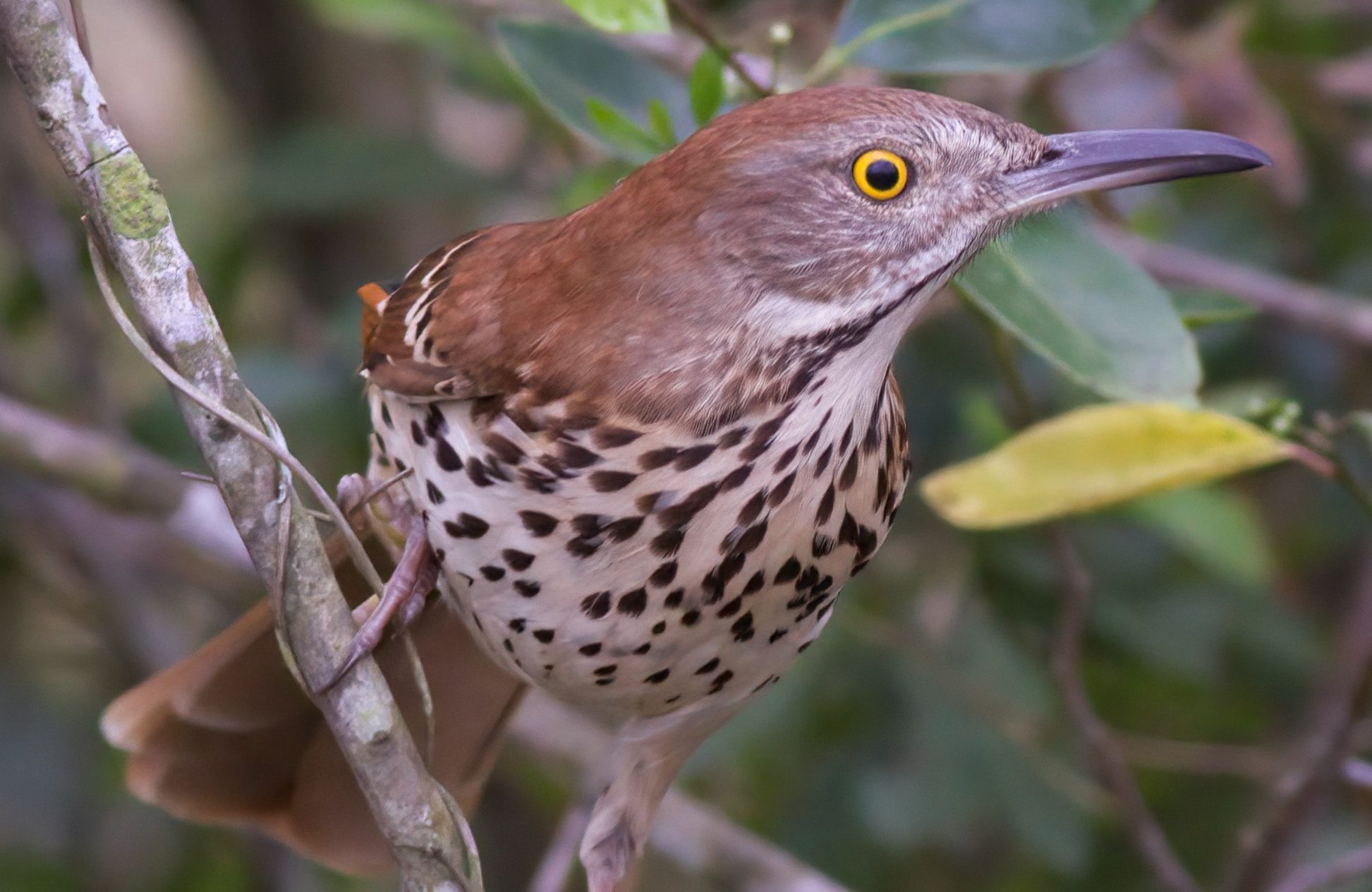The Northern Mockingbird is one of the best-known backyard birds across the U.S. It is not shy, easily recognizable, and as its name suggests, mimics the songs and sounds of other birds and even human-made devices – its song is a litany of the common sounds in its world that it mimics. But Northern Mockingbirds are not the only member of the small family of mimic thrushes in our world. Brown Thrashers are even better mimics but are much less noticed because of their reclusive behavior. They are the other mockingbird.
You are much more likely to hear a Brown Thrasher than see one. They lurk in the thickets of our yards, woodlands, and other places. They prefer to walk along the ground among the leaf litter where they seek much of their diet by thrusting their heads and long bills side to side, tossing material into the air, giving them their common name. They will eat just about anything that moves once uncovered in the litter but are also partial to a wide range of berries and fruit. Their base color is a rich brown that helps them blend in. But once viewed, they are one of the boldest of birds. Their stare is mesmerizing with those bright yellow eyes that seem to look straight through you. They are intense.
This intensity includes the rich repertoire of sounds that make up their song. They are known to mimic as many as 1000 or more sounds, as males boldly proclaim their territories in their chosen homes. Unlike Northern Mockingbirds, their songs are richer, melodious, and loud. During the nesting season, males will abandon their preferred ground-based surroundings for the tops of trees where they belt out their songs. They are early-morning singers but will also sing throughout the day. But even when singing from the trees, Brown Thrashers are hidden within the leaves.
But fear not. Even if you cannot see them, it is easy enough to recognize their song from their more in-your-face Northern Mockingbird relative – by counting how many times a phrase is repeated. Northern Mockingbirds will repeat a given phrase from three to as many as six times. Brown Thrashers repeat phrases two, sometimes three times. Coupled with what can be described as clearer pronunciation of phrases, you can cinch your identification, and impress your friends.
Their reclusive lives include the placement of nests in low bushes where both males and females incubate their eggs and feed their young. They can lay from two to six eggs in a clutch and may have two broods a year. And even this part of their lives is largely hidden, apart from the darting of adults in and out of the nest, if you are lucky enough to find one. If disturbed, Thrashers can be as aggressive as any bird and will fiercely attack would-be predators or a hapless human that comes too close. I can attest to the latter, but I was only trying to pick figs at the time and the Thrasher was not in the sharing mood. They vocalize their displeasure with a sharp “smacking” call as if to say, “Back Off!”
In any case, if you are lucky enough to encounter a Brown Thrasher, from a safe distance, they can be pleasant on your eyes and your ears.
Hope to see you in our great outdoors!




